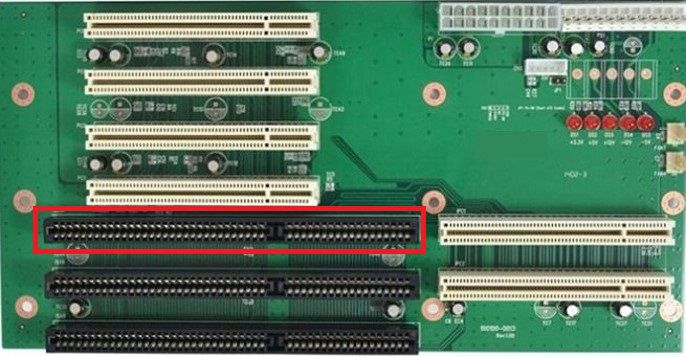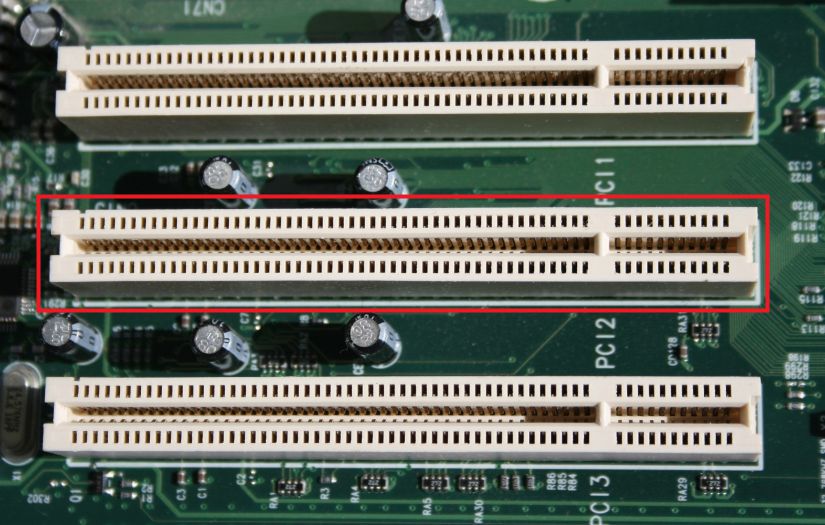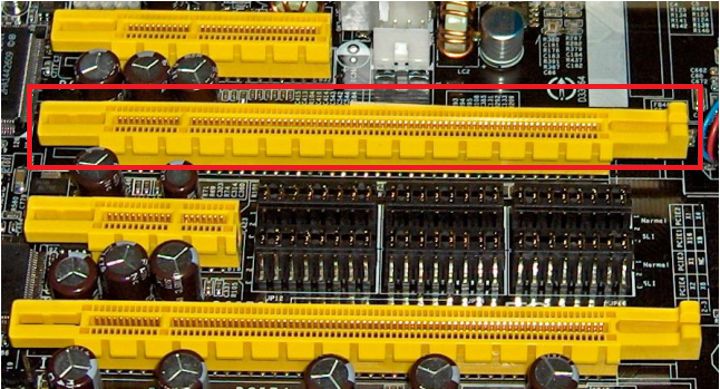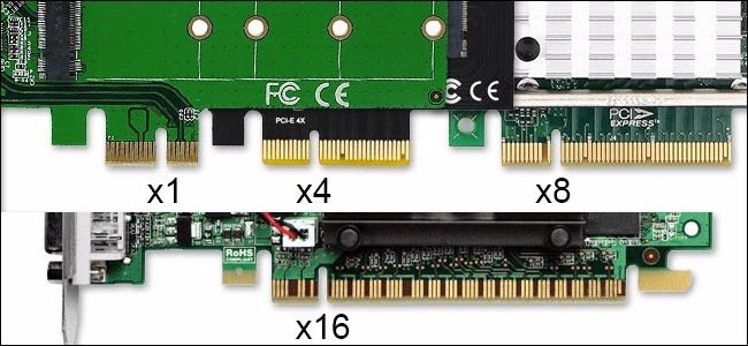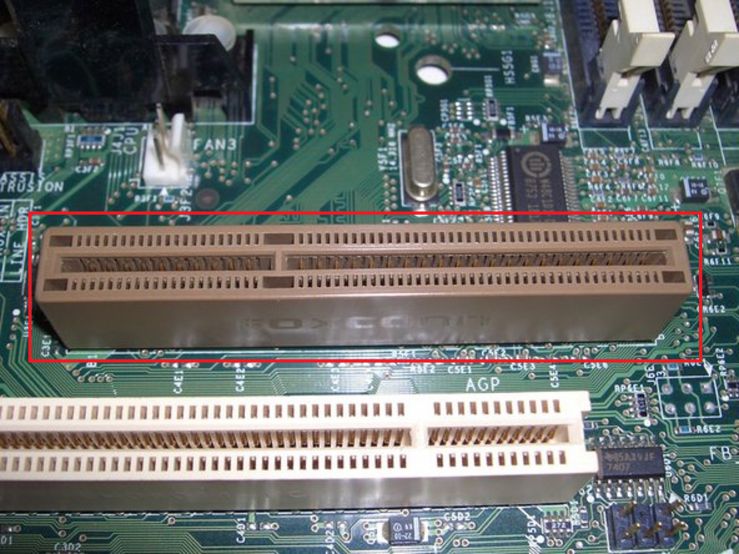Expansion slots on the motherboard enable connecting additional devices such as graphics cards, sound cards, and others. This helps the computer handle more work. While there are many types of expansion slots, the most popular remain PCI and PCI Express (PCIe) slots.
1. ISA slot
ISA stands for Industry Standard Architecture.
This slot is for expansion cards, like network cards and sound cards according to the old standards. However, the transfer rate of sending data (Bus speed) from the expansion card through this slot to the mainboard is low.
2. PCI slot (Peripheral Component Interconnect)
A PCI slot is a type of expansion slot that is commonly used on mainboards. Intel developed the PCI slot in 1992 to replace the ISA slot. The bus speed of the PCI slot can be 33MHz, 66MHz, or 133MHz. The PCI slot on the mainboard is easy to identify and usually white with 120 pins.
3. PCI Express slot
The PCI Express (PCIe) slot was created in 2004 to replace the PCI slot. It was developed by Intel, Dell, HP, and IBM.
PCIe comes in different versions that offer higher bus speeds. Here are the different versions and their corresponding speeds:
- v. 1.x: 2.5 Gb/s
- v. 2.x: 5 Gb/s
- v. 3.x: 8 Gb/s
- v. 4.x: 16 Gb/s
- v. 5.x: 32 Gb/s
PCI Express slots also have different types such as PCIe x1, x4, x8, and x16 with varying numbers of pins. The more pins there are, the faster the data transfer rate.
4. AGP slot (Accelerated Graphics Port)
The AGP slot is used exclusively for video cards. It is a high-speed point-to-point channel for attaching a video card to a computer’s motherboard. The purpose of this design is to improve graphics performance and achieve faster speeds compared to traditional PCI slots.
AGP slots come in different versions, including AGP 1x, AGP 2x, AGP 4x, and AGP 8x. The higher the number, the better the performance. AGP 8x is the fastest version and provides the best graphics performance. Here are the bandwidths for the different types of AGP slots:
- AGP 1X has a bandwidth of 266 MBps
- AGP 2X has a bandwidth of 533 MBps
- AGP 4X has a bandwidth of 1066 MBps
- AGP 8X has a bandwidth of 2133 MBps
To use an AGP slot, you need a compatible video card. AGP video cards are not readily available anymore, and they may not be compatible with newer operating systems such as Windows 10.
